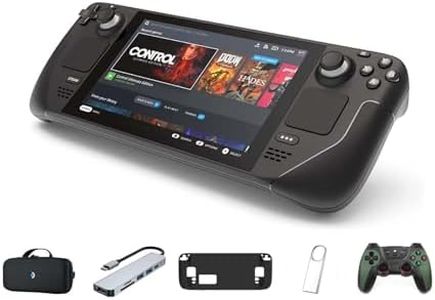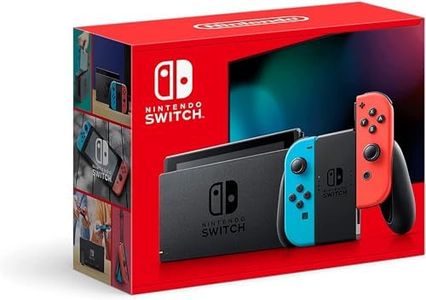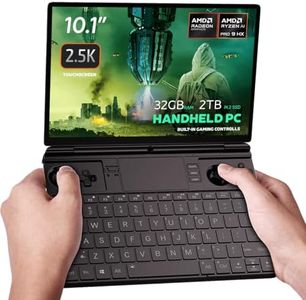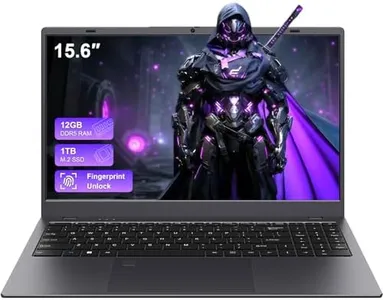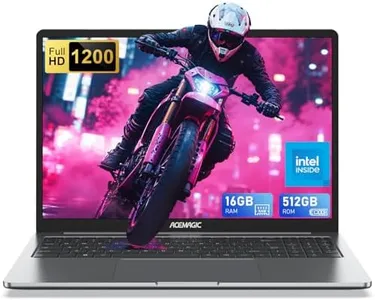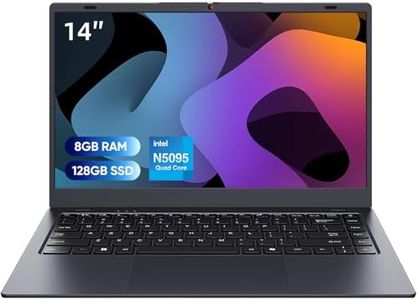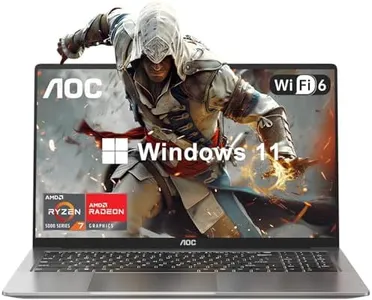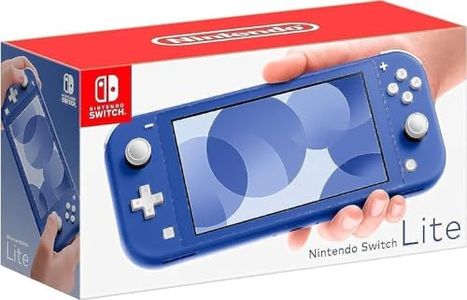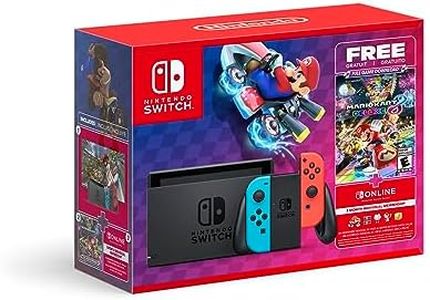10 Best Handheld Gaming Pc 2025 in the United States
Our technology thoroughly searches through the online shopping world, reviewing hundreds of sites. We then process and analyze this information, updating in real-time to bring you the latest top-rated products. This way, you always get the best and most current options available.

Our Top Picks
Winner
Lenovo Legion Go S - 2025 - Mobile Gaming Console - AMD Radeon graphics - 8" PureSight IPS Display - 120Hz - AMD Ryzen™ Z2 Go - 16GB Memory - 512GB Storage - Glacier White - Free PC Game Pass
Most important from
68 reviews
The Lenovo Legion Go S is a compact handheld gaming PC built to deliver strong portable gaming experiences. It features an AMD Ryzen Z2 Go processor paired with AMD Radeon integrated graphics, which should handle most modern PC games at decent settings, though it may not match high-end desktop GPUs for very demanding titles. The 16GB of RAM and 512GB SSD provide ample memory and storage, helping games run smoothly and load quickly.
Its 8-inch PureSight IPS display offers a sharp 1920x1200 resolution with a smooth 120Hz refresh rate and bright, vivid colors, making games look crisp and responsive on the go. Battery life is powered by a 55.5Whr cell, supporting longer play sessions, though actual runtime will vary by game intensity. The device runs Windows 11 Home, enabling access to a broad range of PC games, including the included 3-month PC Game Pass subscription, which is great for trying many titles without buying each one.
The ergonomic TrueStrike controllers with anti-slip texture enhance comfort and precision during gameplay, while the advanced cooling system helps prevent overheating in extended sessions. The integrated graphics might limit performance in the latest AAA games at high settings, and the 8-inch screen, while sharp, may feel small compared to larger handhelds or laptops. Also, weighing 1.63 pounds, it’s portable but not ultra-light. The Legion Go S suits gamers who want a Windows-based handheld balancing performance, display quality, and comfort, especially for those prioritizing game variety and portability over maximum graphical power.
Most important from
68 reviews
Valve Steam Deck 512GB Handheld Gaming Console, 7 inch Touchscreen 1280 x 800 LCD Display, Bundle 5-in-1 Kit
Most important from
30 reviews
The Valve Steam Deck 512GB is designed specifically for PC gamers who want to take their Steam library on the go. Powered by a custom AMD chip tailored for handheld gaming, it can handle demanding AAA titles, making it a strong performer for a portable device. The 7-inch 1280 x 800 touchscreen is sharp and responsive, and the inclusion of dual trackpads under the control sticks helps with games that traditionally rely on mouse input.
With 512GB of fast internal SSD storage and an expandable micro SD slot, it offers ample space for games and media. The device also supports docking to external monitors or TVs, expanding its use beyond handheld play. The Steam Deck runs a Linux-based SteamOS, optimized for gaming and seamless integration with Steam, but it can also function like a regular PC, which adds flexibility.
The 4-pound weight is on the heavier side for a handheld, which might affect comfort during long sessions. The screen lacks an anti-glare coating, so playing in bright environments could be challenging. Battery life varies depending on game demand but generally won’t match dedicated consoles or smartphones. Connectivity options are solid, making this device best suited for PC gamers looking for a versatile, portable way to play their Steam library rather than casual or light gamers seeking a simple plug-and-play handheld.
Most important from
30 reviews
Nintendo Switch™ with Neon Blue and Neon Red Joy‑Con™
Most important from
9664 reviews
The Nintendo Switch with Neon Blue and Neon Red Joy-Con offers a unique blend of portability and versatility, making it an excellent choice for gamers who value flexibility in their gaming experience. Its 6.2-inch LCD screen provides a decent display for handheld play, while the option to play on a TV or tabletop adds to its adaptability. The detachable Joy-Con controllers are a standout feature, allowing for easy multiplayer gaming, whether online or locally. This makes it particularly appealing for families or groups looking to enjoy gaming together.
In terms of performance, the Switch is well-optimized for its games, especially the exclusive titles featuring Mario and friends. The battery life is reasonably good, although heavy use can drain it faster than some might prefer. Its weight of 3.18 pounds keeps it portable, but it may still feel a bit bulky for extended handheld use compared to lighter alternatives.
A drawback worth noting is that the processing power and graphics capabilities may not meet the expectations of hardcore gamers seeking top-tier performance. The Switch runs on a custom NVIDIA GPU, which works well for casual gaming but may struggle with more graphically demanding titles. While it supports various connectivity options, it falls short in terms of advanced specs like extensive storage capacity or RAM compared to dedicated handheld gaming PCs. The Nintendo Switch excels in versatility and accessibility, making it ideal for casual gamers, families, and those who enjoy local multiplayer experiences. However, those seeking high-performance gaming or advanced graphics might find it lacking compared to dedicated handheld gaming systems.
Most important from
9664 reviews
Buying Guide for the Best Handheld Gaming Pc
Choosing the right handheld gaming PC can significantly enhance your gaming experience. These devices combine the portability of handheld consoles with the power of a PC, allowing you to play a wide range of games on the go. To make an informed decision, it's important to understand the key specifications and how they align with your gaming needs and preferences.FAQ
Most Popular Categories Right Now

